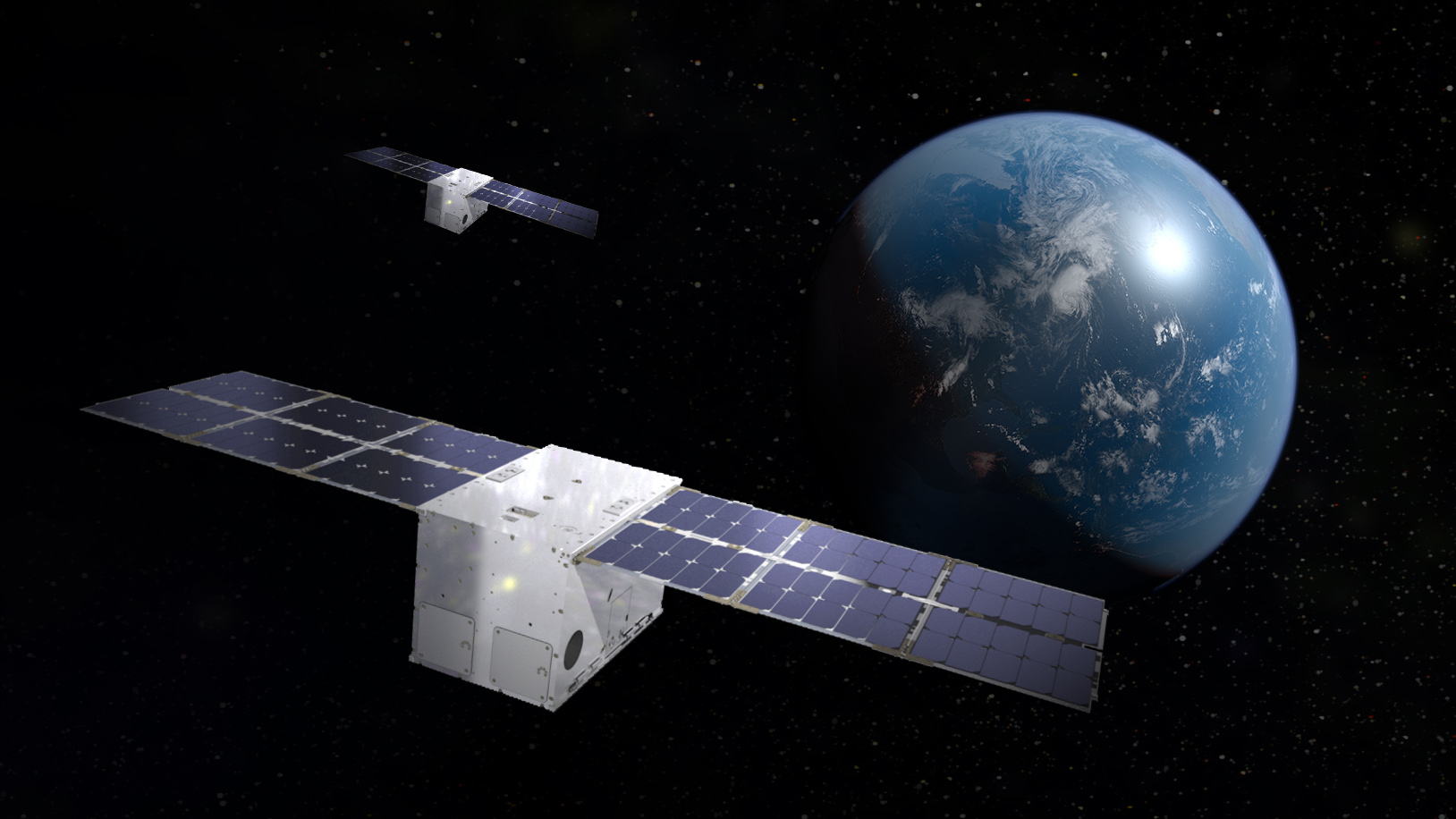Lockheed Martin Successfully Maneuvers Two Cubesats for On-Orbit Service Demo

Lockheed Martin’s In-space Upgrade Satellite System (LINUSS). Photo: Lockheed Martin
COLORADO SPRINGS, Colo.—Following the launch of two small satellites last fall, Lockheed Martin in relatively short order demonstrated its ability to maneuver the satellites closer together for future on-orbit servicing to sustain spacecraft and even upgrade them in space, the company said Monday.
Under the self-funded Lockheed Martin In-space Upgrade Satellite System (LM LINUSS) technology demonstration, two LM 50 cubesats were launched on Nov. 1, 2022 for the on-orbit servicing demonstration aboard a SpaceX Falcon Heavy rocket as a secondary payload. One satellite was dispensed on Jan. 6 and the other Jan. 9, 2023 into Geosynchronous Orbit (GEO) plus 300 kilometers, Karla Brown, program manager for LINUSS, told reporters here during a series of media briefings the company hosted at its OneLM Innovation Center on the Catalyst Campus.
The pair of satellites were initially 750 kilometers apart and by Feb. 28 had maneuvered within 400 meters of each other, proving out the algorithms that will allow for on-orbit upgrades and servicing, Brown said. Since then, they have gotten to about 200 meters apart and are flying in formation, she said. The plan is to continue to get the satellites closer together to keep proving out the algorithms, she said.
The LM 50 cubesats, which are about eight-by-eight-by-12 inches, are based on a Terran Orbital 12U bus integrated with Lockheed Martin’s electro-optical payload deck. The two satellites are identical and for the demonstration one is acting as the servicing vehicle and the other as the resident space object, but the roles can be reversed, Brown said.
The ongoing demonstration is the “pathway to mature technology” to show how the company can eventually do on-orbit servicing, said Dan Tenney, vice president of Strategy and Business Development at Lockheed Martin Space.
The on-orbit servicing will eventually require docking ports on the satellites, something Lockheed Martin will do in future demonstrations. Brown said she couldn’t speculate on when an actual on-orbit servicing mission might be done but said the lessons so far from LINUSS have been incorporated into the company’s future programs.
There is demand from customers in civil, commercial and military space to upgrade and service spacecraft on-orbit, Brown said.
In addition to demonstrating Lockheed Martin’s computer vision system to prove the navigational algorithms and artificial intelligence for highly-automated maneuvering, particularly in the harsh environment of geosynchronous orbit, the rendezvous and proximity operations (RPO) also demonstrated a number of other advancements, including boosting the technology readiness levels of things like the on-orbit processor, inertial measurement units, and guidance, navigation and control software, Brown said.
Lockheed Martin has also demonstrated its cloud-based Horizon 2.0 ground-based command and control hardware and software architecture, and the RPO planning software.
The flight software aboard the satellites is being updated from the ground as lessons are learned, Brown said.
Another benefit has been the development of a “team of RPO experts” that had to work through various challenges and are now working on the “next-generation of RPO satellites” to meet customers’ needs, Brown said.
This article was first published by Via Satellite sister publication Defense Daily.